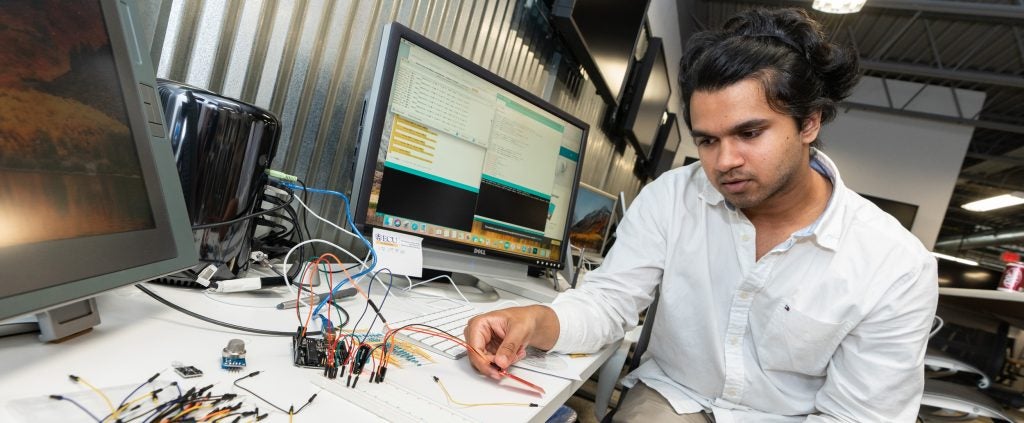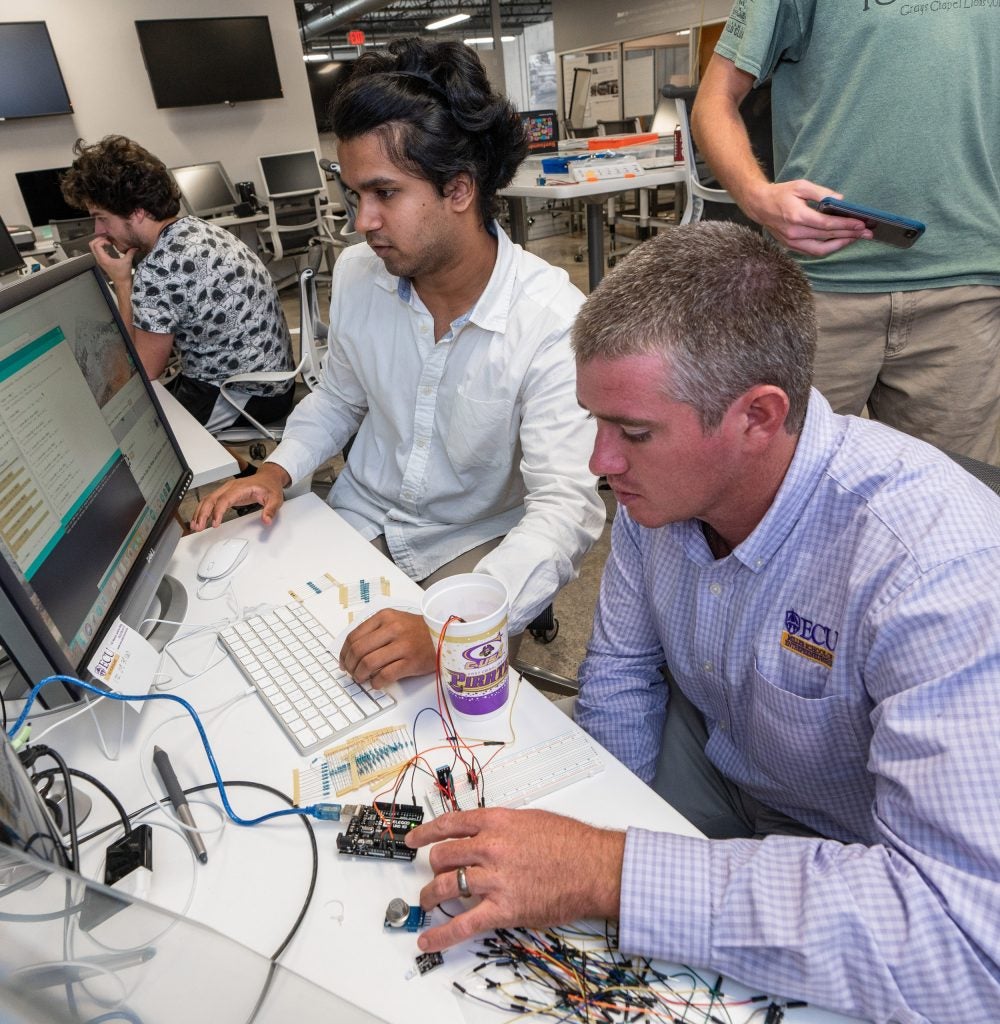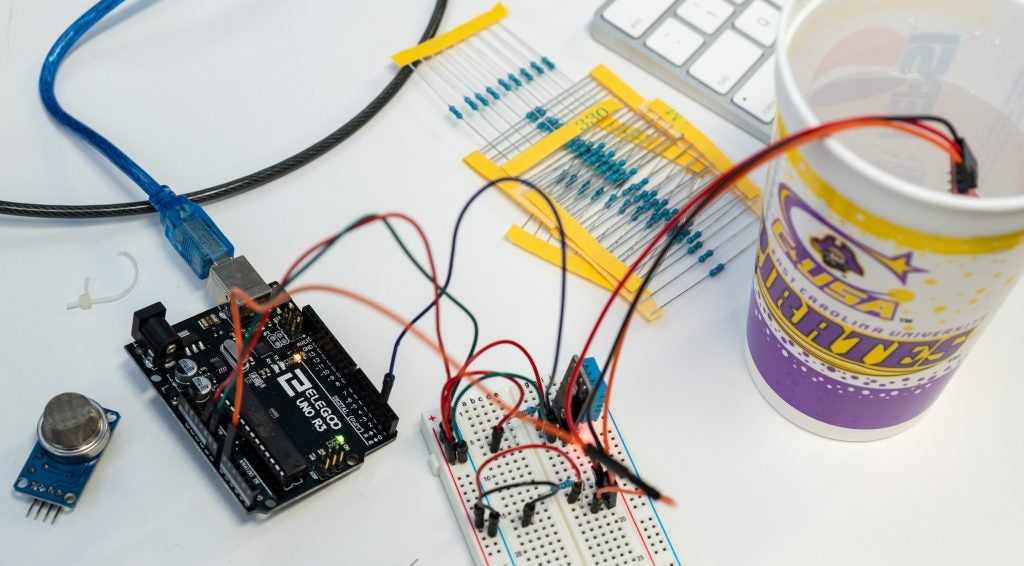Make-a-thon inspires innovation
East Carolina University students brought new ideas and innovations to the university’s BrainSTORM make-a-thon event on Oct. 4, offering fresh perspectives to problems that plague communities after natural disasters.
Nearly 60 students attended the seven-hour event at the university’s Innovation Design Lab, exploring problems encountered by families, businesses and first responders, and prototyping solutions to those challenges.

East Carolina University alumnus Magus Pereria tests a laser sensor that detects the depth of water at the university’s make-a-thon event. The event brought students and mentors together to develop ideas to combat challenges that arise from natural and man-made disasters. (Photos by Cliff Hollis)
ECU innovators developed plans to provide power through interchangeable batteries to those affected by power outages during disasters; investigated how they could collect and distribute data during disasters using existing infrastructure that could help inform emergency management decision making; and worked on sensors that could detect food spoilage during disaster events.
Senior Austin Rabah, a business management major, said he learned about BrainSTORM through one of his classes.
“This was my first time attending such an event,” Rabah said. “Because of it, I was able to come out of my comfort zone to try to help hurricane victims. I learned a lot about technology development, more specifically the actual amount of work that goes into creating items that could make a difference (in a time of need).”
The make-a-thon, hosted by ECU’s Miller School of Entrepreneurship, Innovation Design Lab, and Division of Research, Economic Development and Engagement, was broken into three sessions. During the morning session, students learned about disaster response and recovery basics during both natural and man-made disasters. The afternoon session saw students split into teams and identify potential disaster issues before building a prototype or business plan in the afternoon session.
While hurricane relief weighed heavy on the minds of many students, the prototypes developed by the participants weren’t only storm related. A major component of the event was producing solutions that could be used in many types disasters, whether they be hurricanes, floods, earthquakes or even terrorist attacks.
“I believe they learned a lot about the innovation process and how entrepreneurship can help others,” said David Mayo, a teaching instructor with the Miller School of Entrepreneurship and BrainSTORM coordinator. “One day these students may create ventures that can make an impact on their community and the world. It’s not just about making money, it’s about doing good.”
Mayo said the students worked diligently on solutions that could scale beyond just the Greenville community.
“They saw that they can make a big impact in their community by working toward solutions to tough problems, but we really wanted them to think about the big picture,” he said. “Our students can create solutions that really scale. They don’t have to just help in one or two disasters, they can be used across the globe to help a lot of people.”
Rabah agreed and hopes that in the future, even more ECU students will participate in events like the make-a-thon and share their potential ideas.
“I think the make-a-thon was extremely beneficial for all students,” Rahab said. “I really think we should market the event to everyone on campus, not just for business majors, but for everyone who might have even the slightest inclination to help.”
Learn more about how you can help victims of Hurricane Florence at East Carolina Undaunted.
-by Matt Smith, University Communications

